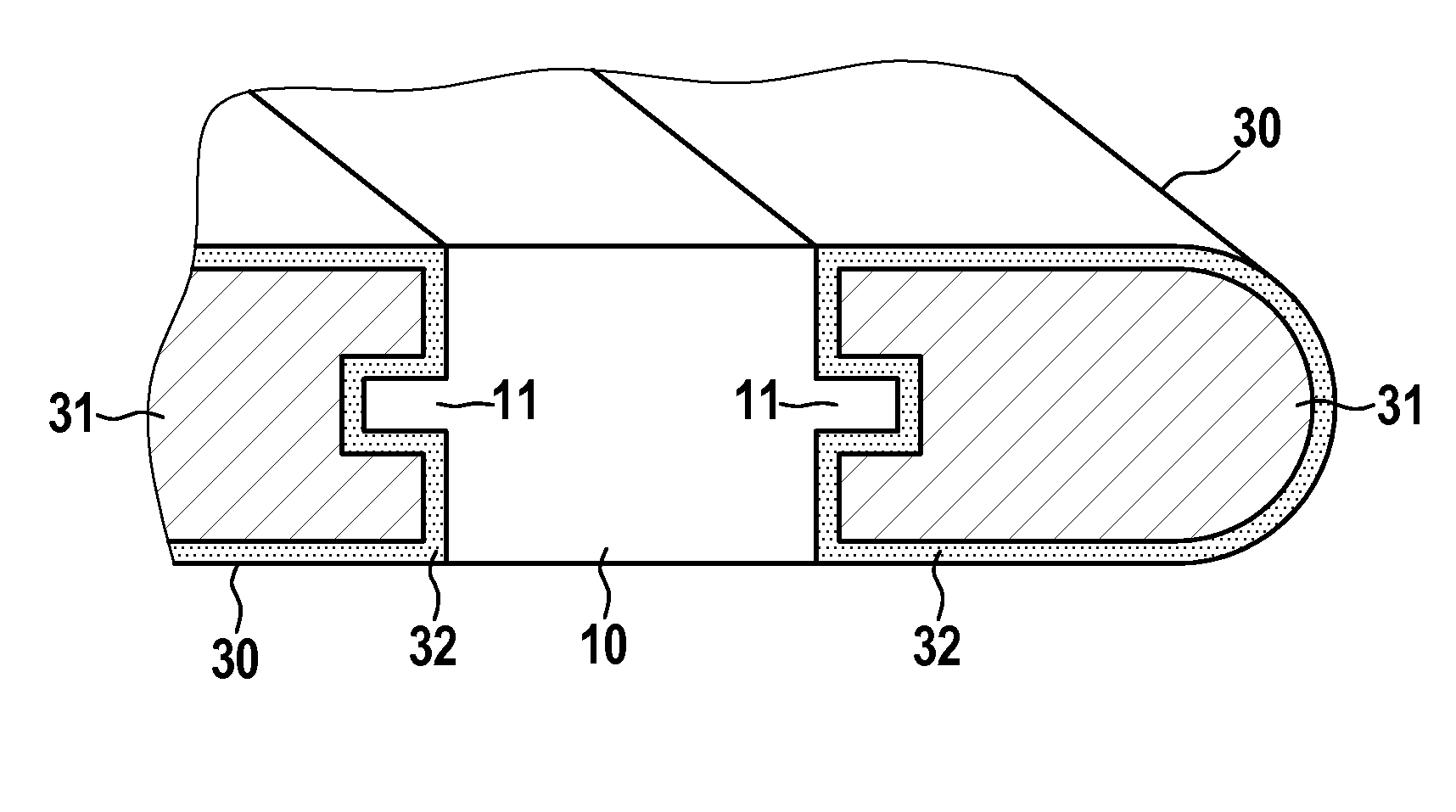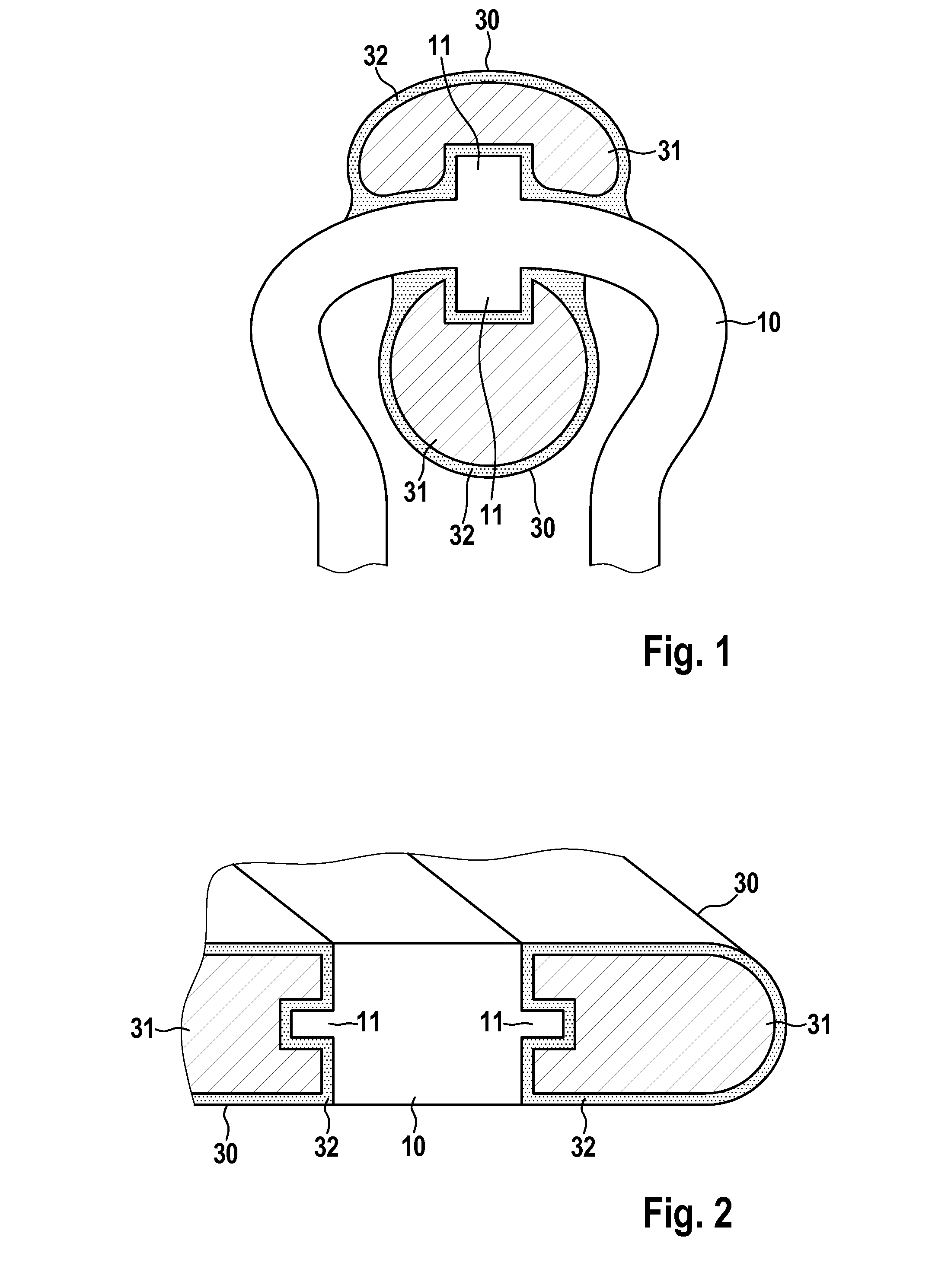Endoprosthesis
- Summary
- Abstract
- Description
- Claims
- Application Information
AI Technical Summary
Benefits of technology
Problems solved by technology
Method used
Image
Examples
Embodiment Construction
[0035]FIG. 1 shows a section of a base body designed as a lattice in a first exemplary embodiment of an endoprosthesis according to the invention embodied as a stent. The base body has webs folded in a zigzag or meandering manner and extending essentially in the circumferential direction or helically as support elements 10, and has webs extending essentially in the longitudinal direction of the stent as connecting elements 20 (see FIG. 4). The section illustrated in FIG. 1 is part of a support element 10. As a whole, the stent is designed as a tubular or hollow cylindrical endoprosthesis which is open at the ends and extends in the direction of the connecting webs 20.
[0036]In the region of an essentially circular section, the support element 10 has finger-shaped sections 11 which extend in the longitudinal direction of the stent. At each finger-shaped section 11 a functional element 30 is provided which has a core 31 composed of radiopaque (X-ray opaque) material such as platinum, i...
PUM
| Property | Measurement | Unit |
|---|---|---|
| Length | aaaaa | aaaaa |
| Length | aaaaa | aaaaa |
| Length | aaaaa | aaaaa |
Abstract
Description
Claims
Application Information
 Login to View More
Login to View More - R&D
- Intellectual Property
- Life Sciences
- Materials
- Tech Scout
- Unparalleled Data Quality
- Higher Quality Content
- 60% Fewer Hallucinations
Browse by: Latest US Patents, China's latest patents, Technical Efficacy Thesaurus, Application Domain, Technology Topic, Popular Technical Reports.
© 2025 PatSnap. All rights reserved.Legal|Privacy policy|Modern Slavery Act Transparency Statement|Sitemap|About US| Contact US: help@patsnap.com



